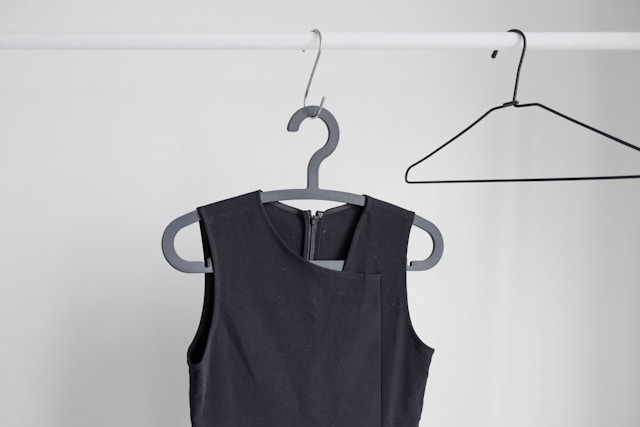A compression or weighted vest is a therapeutic tool designed to provide deep pressure stimulation, offering a calming and grounding effect for individuals with sensory processing challenges, ADHD, autism, or anxiety.
Both compression vests and weighted vests are commonly used in occupational therapy and at home to support self-regulation, reduce anxiety, and improve concentration in children and adults with sensory needs.
Weighted vests are meant to be worn over your clothes, while compression garments go underneath. Both are used to give the body extra sensory feedback, known as proprioceptive input. Proprioception is our body’s sense of where we are in space, how much force or speed we need to move, and how gravity affects our balance.
How Compression Vests Work
Weighted vests and compression garments provide proprioceptive input through deep pressure stimulation, which helps the body feel grounded and secure. You can think of it as similar to receiving a firm hug or a gentle, calming massage — it’s steady, soothing, and reassuring. This type of input helps organize and calm the nervous system, making it easier for the body and brain to work together smoothly.
Research suggests that when proprioceptive processing improves, it can have positive effects on behavioral regulation, attention, and motor control. In other words, when our nervous system feels balanced and in control, it’s easier to focus, move with purpose, and respond calmly to what’s happening around us. A well-regulated nervous system supports everything from emotional stability to physical coordination, allowing the body to function at its best.
The Difference Between Compression Vests and Weighted Vests
- Compression vests apply gentle, even pressure to the torso, similar to a comforting hug. This pressure helps regulate the nervous system, reduce overstimulation, and promote a sense of security and focus. They are usually made of stretchy, snug-fitting material and can be adjusted for comfort.
- Weighted vests, on the other hand, incorporate small, evenly distributed weights within the vest, adding deep pressure stimulation. This additional weight can help individuals feel more grounded, enhance body awareness, and improve attention.
What The Research Says
Research on sensory-based tools is still developing, since many studies are small and limited. Even so, findings about weighted vests and compression garments show encouraging results, especially for improving balance and movement control.
Recent studies have found that wearing compression clothing on the arms can help people reach more accurately by improving body awareness (Barss et al., 2018). Other research found that compression garments can reduce negative behaviors, improve posture, and enhance motor skills in individuals with autism (Guinchat et al., 2020).
Because research findings are mixed, it’s best to talk with an occupational therapist (OT) before using tools like weighted or compression vests. OTs are experts in analyzing daily activities to identify what might be causing challenges.
How Vests May Help With Digestion and Sleep
Along with helping with sensory regulation during the day, weighted and compression vests may also have benefits for some internal body functions. When the central nervous system feels calm and balanced, the body tends to work more smoothly overall. This can lead to better digestion, improved sleep patterns, and enhanced interoception — our awareness of internal signals like hunger, thirst, and body temperature.
What To Look For in a Compression Vest
It is strongly recommended to check with an occupational therapist (OT) or healthcare professional before choosing or using a compression vest, especially for a child.
Compression vests work by applying deep pressure to the body, and the right amount of pressure varies for each person. If the vest is too tight, it can restrict movement, breathing, or circulation. If it’s too loose, it won’t provide the intended calming or organizing effect. An OT can help determine whether a compression vest is appropriate, how long it should be worn, and what type or size is best for your needs.
Having said that, if you don’t have immediate access to an OT, you can start cautiously. Choose a vest designed specifically for sensory use, follow the manufacturer’s sizing guide, and monitor closely for any signs of discomfort, overheating, or distress. The material should be soft, breathable, and durable to prevent irritation or overheating, especially if worn for long periods. Comfort and fit are key; the vest should mimic the calming sensation of a firm hug without restricting movement. Safety is another critical factor, as the vest must not impede breathing, circulation, or natural mobility, and wear time should always follow recommended guidelines.
Keeping an Eye on The Person Using a Weighted Vest
Because there’s still limited research on how effective weighted vests are, it’s important to watch your child closely while they’re wearing one. For children who are nonverbal, pay extra attention to signs of discomfort, such as changes in behavior, facial expressions, or movement. Some kids—especially those who experience anxiety—might actually find the added pressure uncomfortable or overwhelming.
If you notice any signs of distress, it’s best to remove the vest and talk with an occupational therapist about other options.
Top-Rated Compression Vests
If you’re considering a compression vest for sensory support, it helps to know which options are highly recommended by parents, therapists, and users. In this section, we’ve gathered some of the top-rated vests that are known for quality, comfort, and effectiveness. Each one has features that make it a great choice for helping kids feel more calm, focused, and supported throughout their day.
Tips for Choosing a Compression Vest to Try
-
Pick a vest made specifically for sensory or therapeutic use, not for sports or fashion.
-
Make sure it fits snugly but doesn’t restrict breathing or movement.
-
Choose adjustable options (like Velcro or zipper styles) so you can control the pressure.
-
Follow the manufacturer’s sizing guide carefully.
-
Start with short wear times and watch for any signs of discomfort or overheating.
-
If possible, check in with an occupational therapist for guidance before or during use.
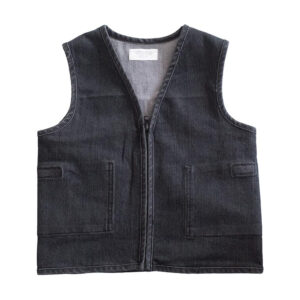
Stretch Denim Weighted Vest by Fun And Function
The Fun and Function Stretch Denim Weighted Vest is a stylish and therapeutic solution designed to provide calming sensory input.
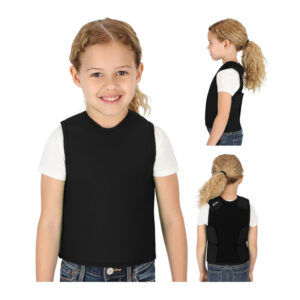
Deep Pressure Comfort Sensory Compression Vest
This sensory compression vest offers gentle, deep-pressure support to help children and adults with sensory processing needs feel more grounded and focused.
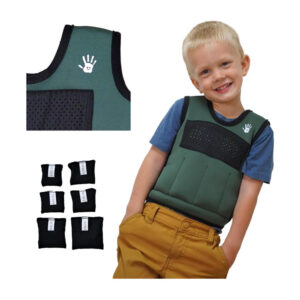
Adjustable Compression Vest With Six Removable Weights
The Sensory4u Weighted Sensory Compression Vest is designed to provide gentle, calming pressure for children, particularly those aged 2 to 6.
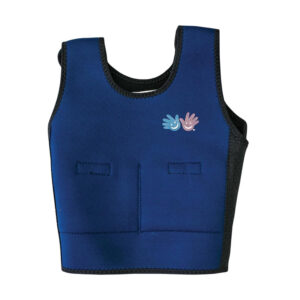
Weighted Compression Vest by Fun and Function
The Fun and Function Blue Weighted Compression Vest is a thoughtfully designed therapeutic tool that provides calming sensory input for all ages.
Guidelines for Using Compression and Weighted Vests Safely
-
Start light and go slow: Begin with a small amount of weight and never exceed 5–10% of your child’s body weight. Increase gradually as needed.
-
Ensure proper fit and distribution: The vest should fit snugly with weight spread evenly around the midsection, using built-in pockets to adjust as necessary.
-
Limit wear time and schedule use wisely: Weighted vests are most effective in short sessions (about 15 minutes) during focused activities, 2–3 times a day. Compression vests can be worn longer but always follow OT guidance.
-
Watch and adapt: Keep a close eye for signs of discomfort, especially in non-verbal children. Be flexible—some days the vest may help, other days it may not, and that’s completely normal.
References:
- Guinchat, Vincent, et al. “Compressive Garments in Individuals with Autism and Severe Proprioceptive Dysfunction: A Retrospective Exploratory Case Series.” Children, vol. 7, no. 7, 1 July 2020, p. 77, https://www.mdpi.com/2227-9067/7/7/77.
- Barss, Trevor S., et al. “Effects of a Compression Garment on Sensory Feedback Transmission in the Human Upper Limb.” Journal of Neurophysiology, vol. 120, no. 1, 1 July 2018, pp. 186–195, https://doi.org/10.1152/jn.00581.2017.
